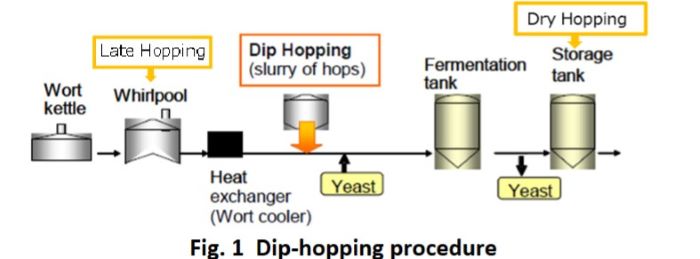From Vol. 4, No. 8, December 2020
Quickly summarizing some (at the time) recent research at Kirin Brewery in Japan, this is what I had to say about dip hopping at the 2013 National Homebrewers Conference in Seattle: “Hops added to fermentation tank. Dip hopped beer high in linalool and low in myrcene compared to dry hopped beer. ‘We assume that high linalool was due to low temperature extraction, and low myrcene was due to elimination by yeast.’”
Then it fell off the radar. Until recently. After “dip hopping” made its way into headlines at VinePair and Craft Beer & Brewing it shouldn’t be a surprise to see more breweries trying the process.
So what do we know? Kirin began using the process in 2012 for its Grand Kirin beers. Basically, brewers there make a slurry by steeping hops for about an hour at temperatures (150-170°F) lower than found in conventional whirlpooling, then add the slurry into cooled wort before pitching yeast. Kirin found that the resulting beers contained as much linalool as dry hopped beers but less myrcene (which may mask fruity aromas associated with linalool and other oxygenated compounds). This also reduced production of 2M3MB (an onion-like off flavor).
Kirin researchers saw little difference in hop enzymatic activity between dip-hopped beers and whirlpooled beers. Not discussed is the implication that enzymes associated with hop creep that occurs during dry hopping may be denatured during dip hopping. If the process changed nothing else and it reduced hop creep that could be good enough reason for breweries to dry hop less and dip hop more.
For brewers, the appeal is pretty simply: less isomerized bitterness than with whirlpooling and greater retention of some essential oil for biotransformation. These recent stories report that brewers and drinkers perceive a difference, a positive difference, in dip-hopped beer aroma and flavor.


These images are from a Kirin presentation at the 2018 Brewing Summit. Master Brewers Association of the Americas members may access this poster from Kirin (A-127) at no additional cost)